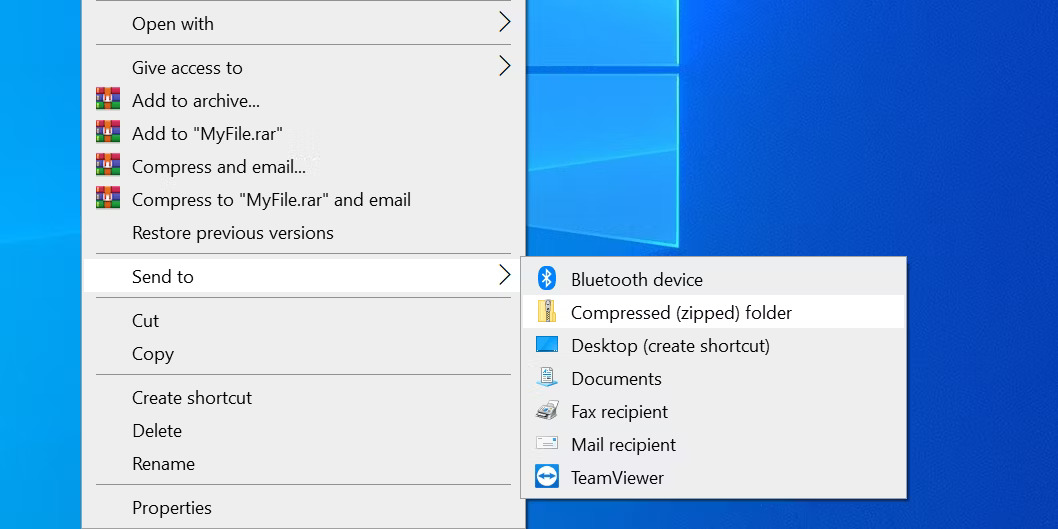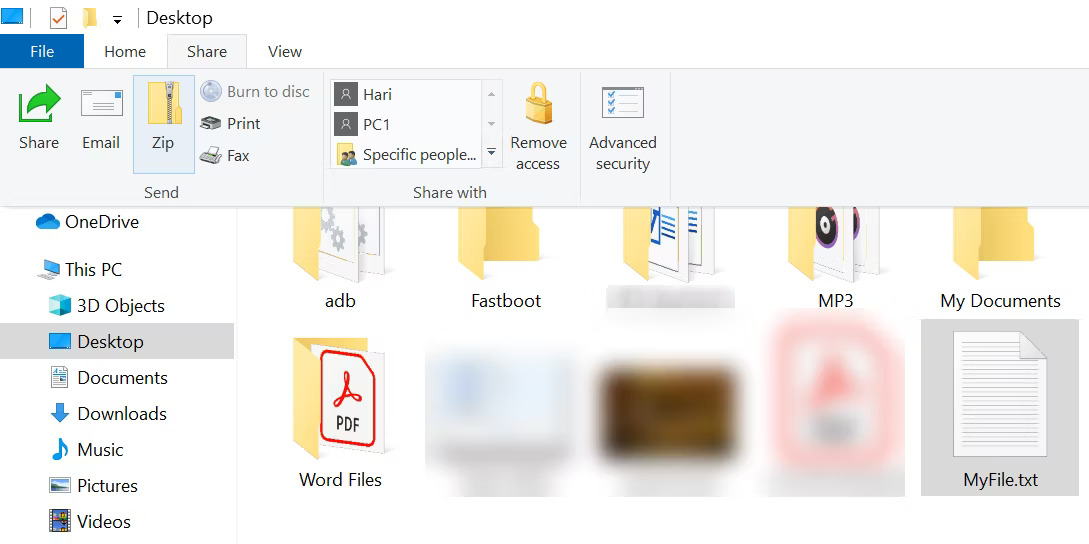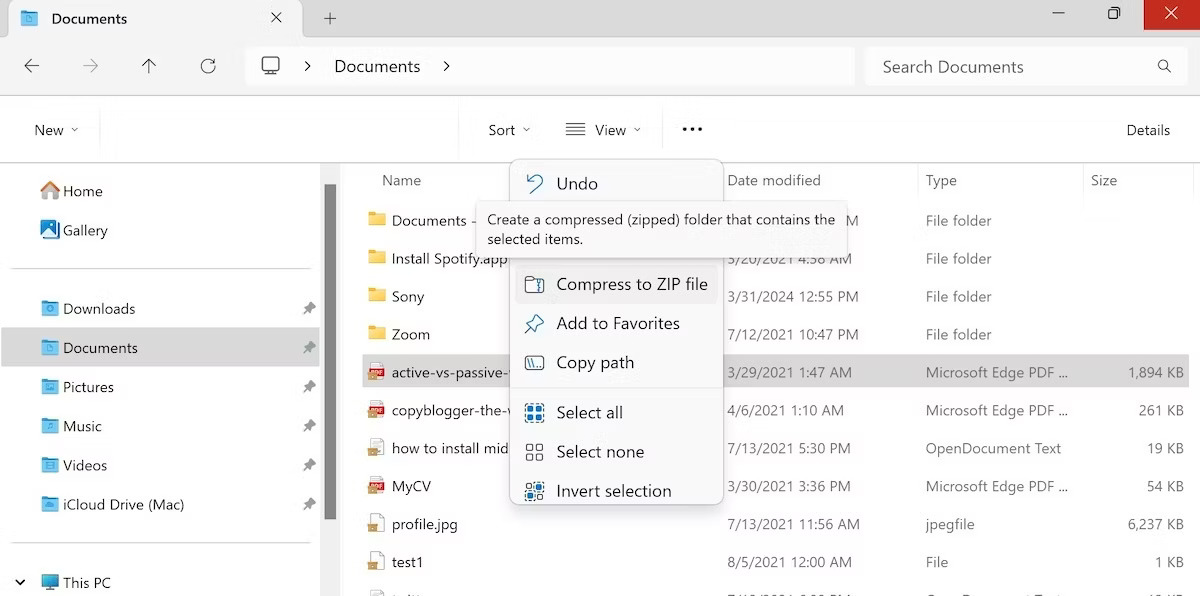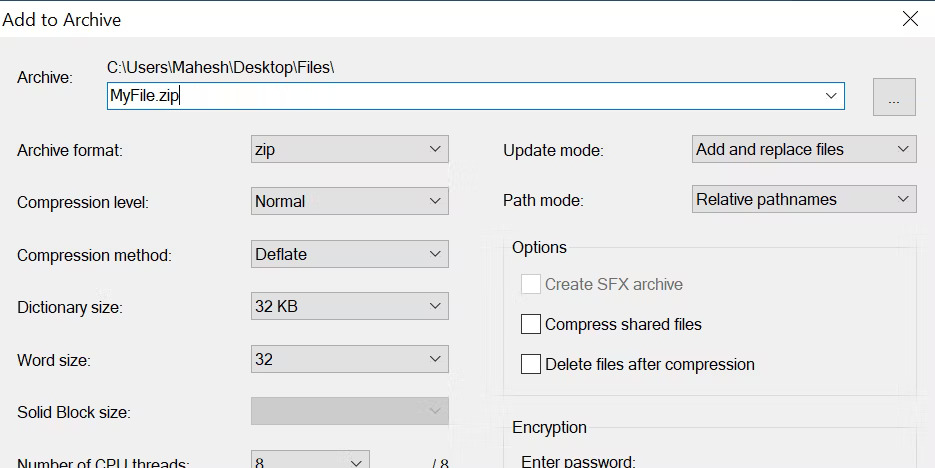4 easy ways to create ZIP files on Windows
There are many ways to create ZIP files on Windows 10 or 11. You can use the context menu, do it through Command Prompt, use third-party applications, etc. - it depends on preference. or your personal situation.
Today's article will show you all the different ways and methods to do this.
1. Create a ZIP file using the Windows context menu
One of the easiest ways to create ZIP files on your Windows 10 or 11 is to use the context menu. This menu has an option that allows you to add selected files to a ZIP archive (you can add and remove items from the Windows context menu).
You don't need to install any extensions or apps to use this feature. This feature works out of the box and is available in many versions of Windows.
You can use this option to add single file, multiple files and even folders to the new ZIP archive.

- Open the folder containing the files you want to add to the ZIP.
- Select individual files by clicking once on them or CTRL + A to select all files.
- Right-click any file and select Send to > Compressed (zipped) folder .
- Windows will create a new ZIP archive containing the files you selected.
The application will compress a new file for you immediately.
The only drawback is that this method is poor in terms of additional features. So if you want to use some complicated stuff like password protecting your ZIP files and the like – you'll have to try other methods.
2. Use the File Explorer option to create ZIP files on Windows
Another integrated way to create ZIP files on Windows is to use the File Explorer ribbon option. This option works quite similar to the context menu option, and you can use it to add both files and folders to a new ZIP archive.

- Open a File Explorer window and access the folder containing your files.
- Select the files you want to add to the ZIP archive.
- Click the tab that says Share , located at the top of your File Explorer window.
- You will see an option that says Zip in the Send section . Click this option.
- Windows will go ahead and create a ZIP archive for you.
That's it - there won't be any prompts or confirmations, but your file will be compressed in no time. Extracting these files on your Windows 10 and 11 is quite easy; just a few clicks away.
On Windows 11
To compress files via File Explorer on Windows 11, the steps will be a little different.

- Open File Explorer and go to the file or folder you want to compress.
- Select the file, click the three-dot ribbon from the top, then select Compress to ZIP file .
As soon as you do this, your file will be created and compressed right next to the original file.
3. Use Windows Command Prompt to create a ZIP file
Like so many other tricks or tricks in CMD, there is also a command to compress your files.
Windows 10 and 11 come with a command called tar that helps create or extract archives on your PC. You can then use this command to add your existing files to the ZIP archive.
TipsMake.com has complete instructions on how to compress and decompress files using Command Prompt. Just follow the steps there.
4. Use a third-party application to create ZIP files on Windows
Windows 10 and 11 allow you to create ZIP archives without any applications, but the features are quite limited. So if you want more options, such as the ability to choose compression levels and split your archive into parts, you need to use a third-party archiving application.
7-Zip (free) is one of the third-party archive tools that you can use to create and extract many types of archives from your computer. The tool also provides options like splitting your archives, adding password protection to them, etc.

To use 7-Zip to create ZIP files on Windows 10 or 11, follow the steps below:
- Install the 7-Zip application on your PC.
- Open the app and your files will appear. This is the application's very own file manager.
- Using this file manager, access the folder containing your files.
- Select the files you want to add to your ZIP archive.
- Click Add in the top toolbar.
- Specify the output folder, archive format, compression level, and password options for your ZIP archive. Then, click OK at the bottom.
- 7-Zip will create and save the archive in the folder you selected.
That's it - your files will be compressed to your liking.
As you might have guessed, as a Windows user, you don't need to put in much effort to create ZIP archives on your PC. Whether it's Command Prompt or File Explorer, you can compress files quite easily.
 How to completely delete data on your computer
How to completely delete data on your computer How to open the virtual keyboard on Laptop simply and quickly
How to open the virtual keyboard on Laptop simply and quickly How to change DNS on Windows 11 to increase Internet speed
How to change DNS on Windows 11 to increase Internet speed What is Copilot? How to install and use Copilot AI on Windows 11
What is Copilot? How to install and use Copilot AI on Windows 11 Certain commands you must know when using Windows Copilot
Certain commands you must know when using Windows Copilot How to convert images to text with free Snipping Tools on Windows
How to convert images to text with free Snipping Tools on Windows